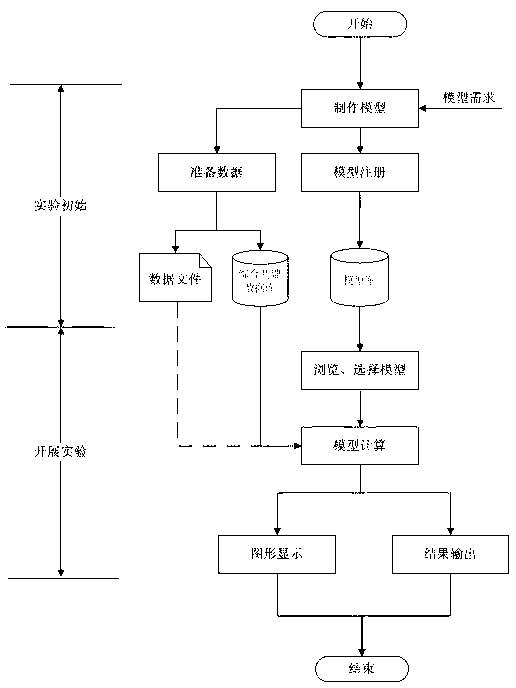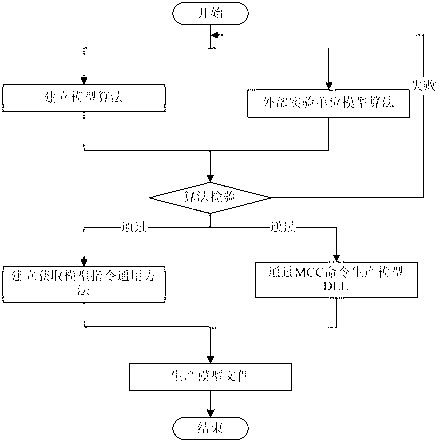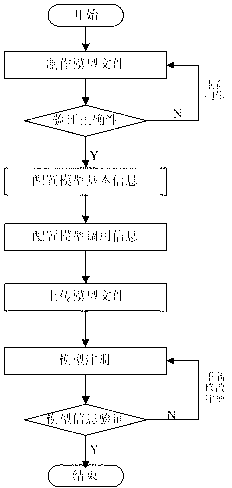Dynamic model allocating method based on matrix transformation
A technology of matrix transformation and model algorithm, applied in special data processing applications, instruments, electrical digital data processing, etc., can solve the problems of management progress unable to meet the requirements of superiors, lack of graphical result display means, and cumbersome analysis and evaluation process, etc. To achieve the effect of reducing the workload of software maintenance, shortening the analysis and evaluation cycle, and enriching the model library
- Summary
- Abstract
- Description
- Claims
- Application Information
AI Technical Summary
Problems solved by technology
Method used
Image
Examples
Embodiment 1
[0049] Embodiment 1, a method for dynamically deploying models based on matrix conversion, the steps are as follows:
[0050] Step 1, generate a model file, encapsulate the algorithm into a model file in a general form through matrix transformation, analyze the model algorithm to be processed, including the algorithm name, the number of input and output parameters and parameter types, and convert all input and output parameters into an input matrix and an output matrix;
[0051] Step 2, model verification and registration configuration, store the model in the model library and verify the correctness of the model;
[0052]Step 3, model dynamic call, first select the model, then analyze the input data source of the model, and call the matrix edge detection to provide fault-tolerant processing, load the corresponding data for model calculation, finally analyze the calculation result - the output matrix, and display it graphically , save the calculation results;
[0053] Step 4,...
Embodiment 2
[0054] Embodiment 2, in step 1 of the method for dynamically deploying models based on matrix transformation described in Embodiment 1, the steps of encapsulating the algorithm into a general-purpose model file through matrix transformation are as follows:
[0055] (1) Generate model files through matrix transformation
[0056] First, analyze the model algorithm. The result of the analysis includes the algorithm name, the number of input and output parameters of the algorithm, and the parameter types. Then, the algorithm is packaged according to the algorithm parameter information. The package configuration includes the following contents:
[0057] a. Name of the encapsulated model interface;
[0058] b. input matrix, which contains the input matrix of all input parameters;
[0059] c. output matrix, which contains the output matrix of all output parameters;
[0060] d. Model algorithm input parameter information;
[0061] e. Model algorithm output parameter information;
...
Embodiment 3
[0071] Embodiment 3, in the step 2 of the matrix conversion-based model dynamic allocation method described in embodiment 1 or 2, the model is stored in the model library and the correctness of the model is verified. The steps are as follows:
[0072] (1) Model configuration
[0073] Configure model information and store the model in the model library, and then store the configuration information in the database. The configuration information includes the following:
[0074] a. Model basic information, including model name, description and version information;
[0075] b. Model call information, including model input and output matrix information, model usage instructions, and model file information;
[0076] (2) Model verification
[0077] First read the path and name of the model file, find out whether the model in the model library exists, and send a prompt message if it does not exist, and then restore the input and output matrix information to the algorithm parameter ty...
PUM
 Login to View More
Login to View More Abstract
Description
Claims
Application Information
 Login to View More
Login to View More - R&D
- Intellectual Property
- Life Sciences
- Materials
- Tech Scout
- Unparalleled Data Quality
- Higher Quality Content
- 60% Fewer Hallucinations
Browse by: Latest US Patents, China's latest patents, Technical Efficacy Thesaurus, Application Domain, Technology Topic, Popular Technical Reports.
© 2025 PatSnap. All rights reserved.Legal|Privacy policy|Modern Slavery Act Transparency Statement|Sitemap|About US| Contact US: help@patsnap.com



